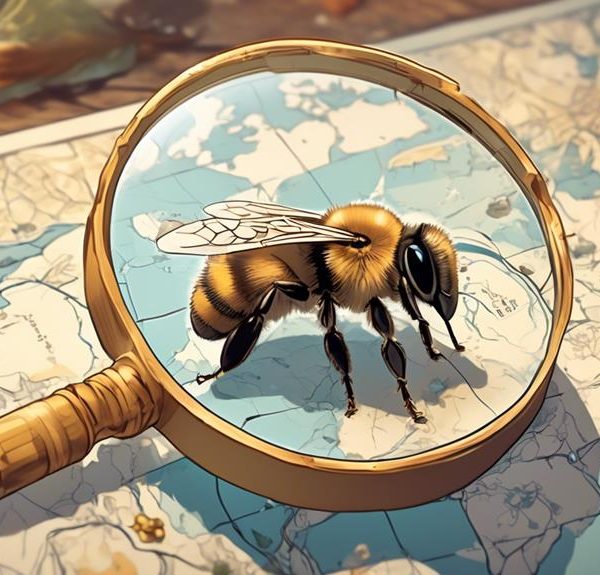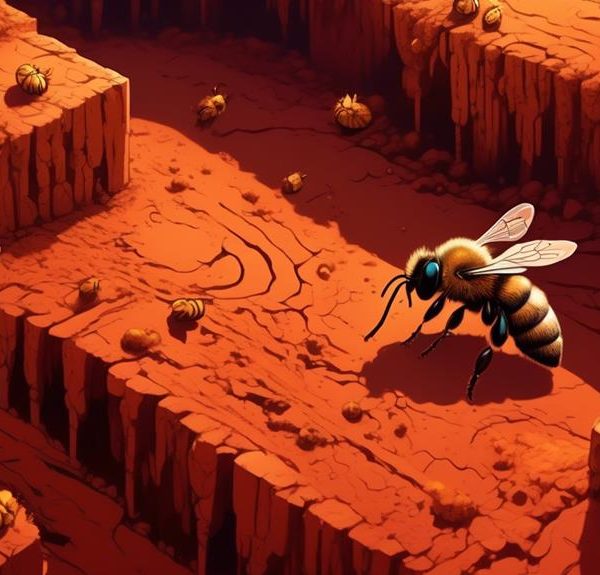Take a deep dive into the remarkable winter survival strategies of Mason Bees, nature's resilient pollinators.
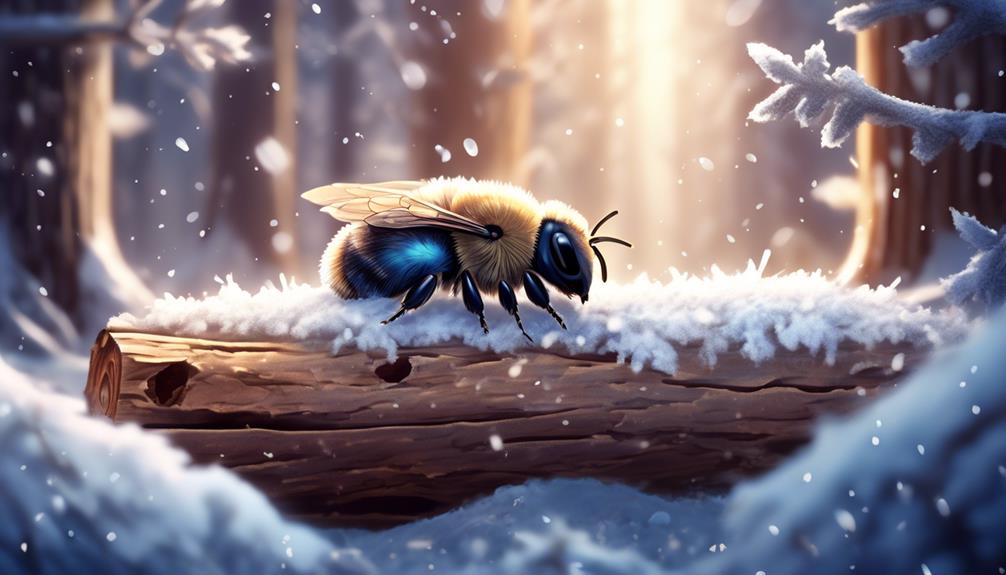
Can Mason Bees Survive Winter?
Did you know that up to 90% of mason bees can survive the winter, contrary to many other bee species? That's right, you've got these little, industrious insects fighting through the cold months in unique ways.
But how do they manage to endure the harsh conditions when most of their buzzing cousins don't? Well, you might be surprised to learn that their survival isn't just about hibernation.
It's a fascinating world, one that might just change how you think about these beneficial pollinators. So, are you ready to uncover the secrets behind their winter resilience?
Key Takeaways
- Mason bees are solitary creatures that live in tiny tubes or holes and have a lifespan of about ten weeks.
- In winter, adult bees die off, leaving behind their offspring who survive by feeding on stored pollen and nectar.
- Hibernation, known as diapause, is crucial for mason bees to survive freezing temperatures and harsh weather.
- Harsh weather, predators, and infections pose threats to mason bees in winter, but providing protected nesting areas can help mitigate these risks.
Understanding Mason Bees
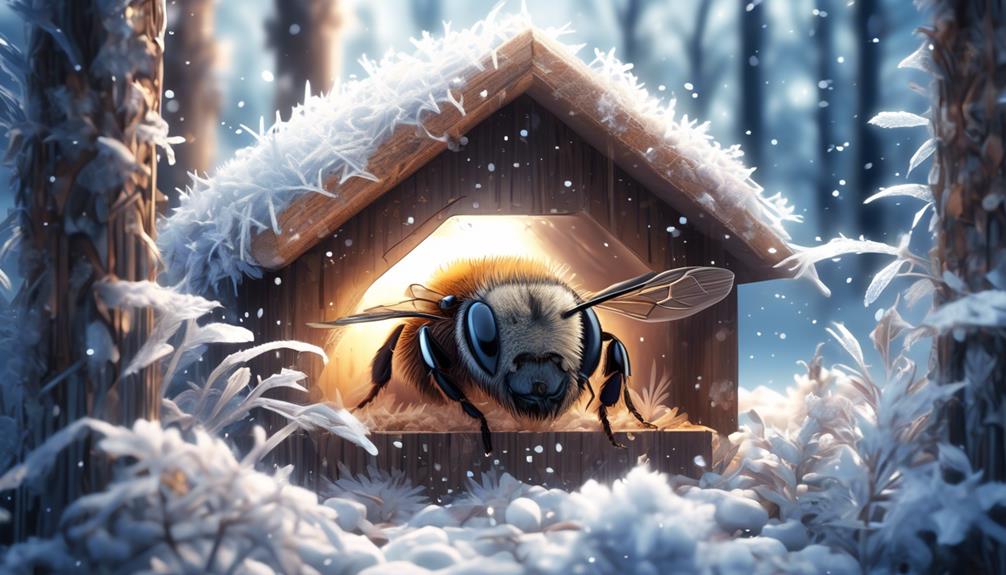
To fully grasp the survival mechanisms of mason bees during winter, it's crucial to first understand their unique characteristics and behaviors. Unlike honeybees, you'll find that mason bees are solitary creatures. They don't live in hives, but in tiny tubes or holes, often in wood or masonry.
Each female mason bee is a queen who lays her eggs independently. She'll make a nest, lay an egg, and then seal it off with a plug of mud, hence the name 'mason.' This solitary lifestyle is a key factor in their survival strategy.
Their bodies are also equipped for survival. Mason bees have dense hair on their underside, which helps in collecting and distributing pollen. This makes them efficient pollinators, even in cooler climates.
Their lifecycle is fascinating too. Mason bees only live for about ten weeks. They emerge in spring, mate, and then die off by summer. The eggs laid that spring hatch into larvae, which feed on stored pollen and nectar. By winter, they're fully grown bees, cocooned and hibernating in their nests.
Understanding these characteristics and behaviors is the first step in comprehending how mason bees survive winter.
Mason Bees: Winter Survival Tactics
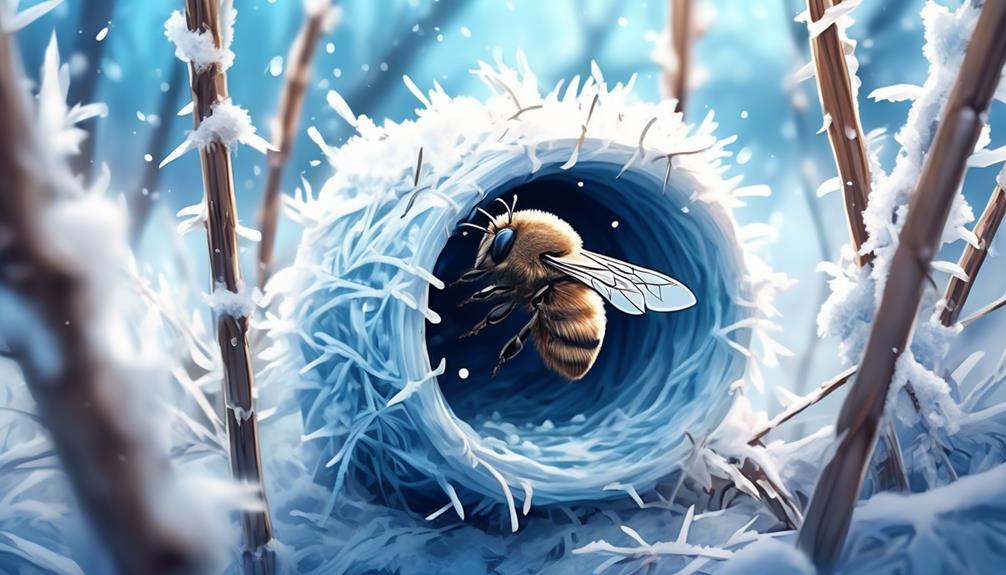
With an understanding of their unique lifestyle and characteristics, you're now equipped to explore the intricate survival tactics mason bees employ during winter. Unlike honeybees, mason bees don't produce honey or have a queen to protect, so they don't need to stay active during winter. Instead, they've evolved a completely different survival strategy.
Come autumn, the adult bees die off, leaving behind only their offspring. These larvae feed on the pollen and nectar stores left by their parents, then spin cocoons and enter a state of dormancy, or diapause. They're essentially asleep, their metabolic activities reduced to a bare minimum. This allows them to conserve energy and survive the winter.
When spring comes, warmer temperatures trigger the bees to awaken from diapause. The now adult bees chew their way out of their cocoons and the cycle begins anew. It's a marvel of nature, a testament to the resilience and adaptability of these tiny creatures.
Understanding these survival tactics not only gives you a deeper appreciation for mason bees but also equips you to better support and conserve these valuable pollinators in your own garden.
The Importance of Hibernation
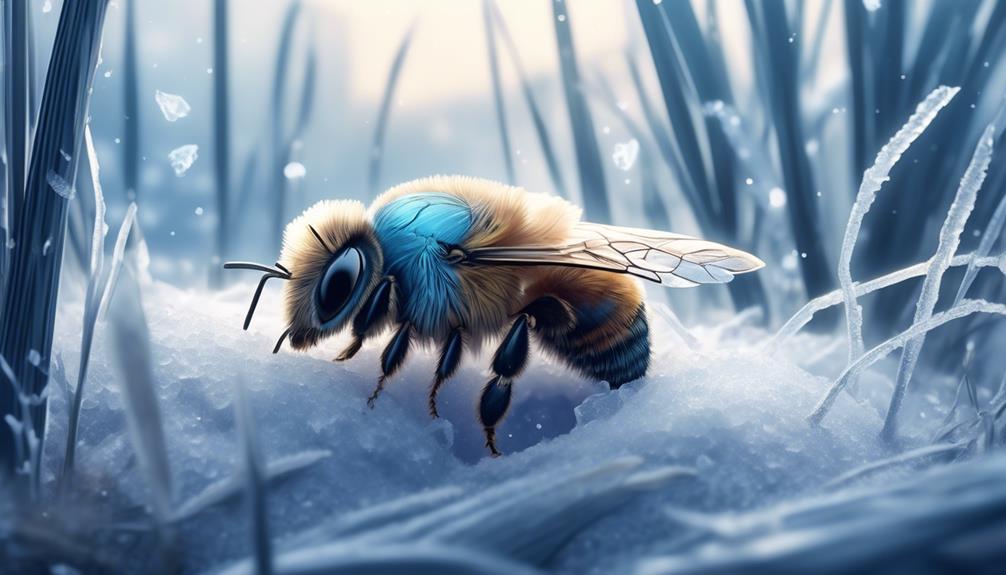
Understanding the critical role of hibernation in the life cycle of mason bees can help you better appreciate these hardy pollinators and their survival strategies. Hibernation isn't merely a phase of inactivity but a vital part of their existence. During this time, they're able to conserve energy and survive the harsh winter conditions where food sources are scarce.
You must know that mason bees undergo a form of hibernation known scientifically as diapause. It's a suspension of development characterized by metabolic slowdowns and reduced activity. Diapause usually sets in during the pupa stage, enabling the bees to withstand freezing temperatures. This process is triggered by environmental signals, such as declining daylight and dropping temperatures.
Moreover, the cocoon where the bees hibernate provides a protective layer against predators and harsh weather. Mason bees seal their cocoons with mud, further enhancing their survival chances during winter. If it weren't for this crucial hibernation period, these bees wouldn't be able to survive winter and pollinate plants in the spring.
Threats to Mason Bees in Winter
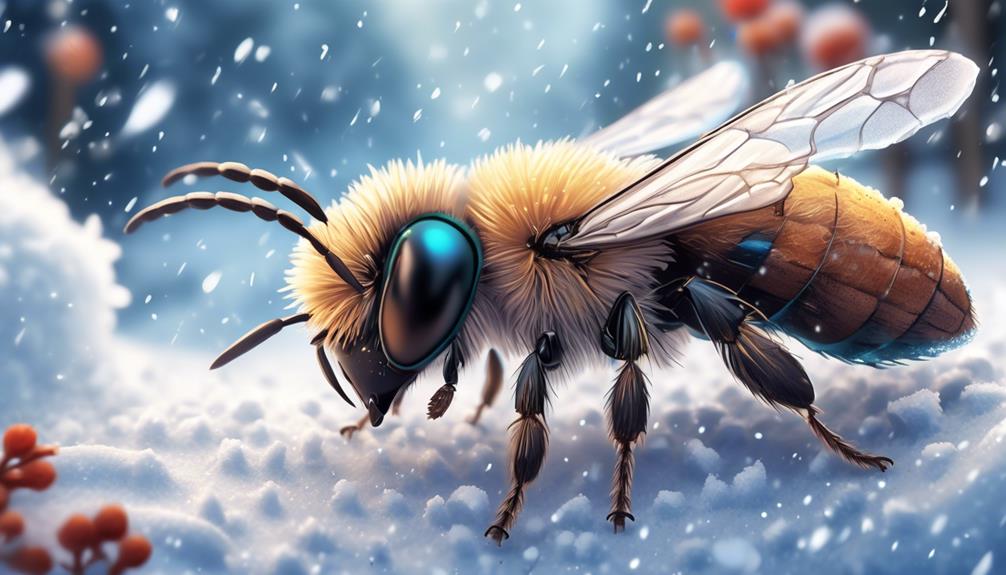
Despite their robust survival strategies, mason bees aren't immune to threats during the winter months. You should know, at this time, their survival can be jeopardized by three main factors: harsh weather, predators, and disease.
Threat | Impact | Solution |
|---|---|---|
Harsh Weather | Extreme cold can kill bees if their hibernacula aren't well insulated. | Provide a protected, insulated nesting area. |
Predators | Birds, spiders, and other insects can destroy nests and consume larvae. | Use protective casings for nests. |
Disease | Fungal, bacterial, and viral infections can decimate populations. | Maintain clean, dry nesting sites. |
Harsh weather, particularly deep freezes, can be fatal. Ensure you provide a well-insulated and protected nesting area to shield them from the elements. Predation is another threat, with birds, spiders, and other insects capable of destroying nests and consuming larvae. Use protective casings for nests to deter these predators. Lastly, disease, including fungal, bacterial, and viral infections, can decimate bee populations. You can combat this by maintaining clean, dry nesting sites. Understanding and mitigating these threats can help your mason bees weather the winter safely.
How You Can Help Mason Bees
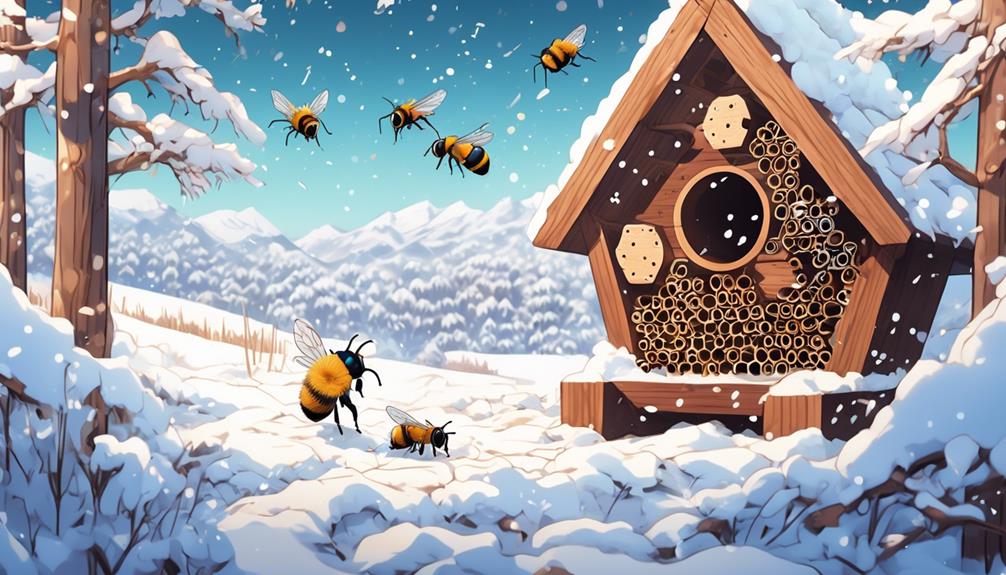
If you're keen on helping mason bees thrive, there are several effective strategies you can employ, even during the harsh winter months.
Firstly, establishing a mason bee house in your yard can provide these organisms with a safe, warm abode. Ensure you place the house in a sunny spot, preferably facing southeast. This placement allows the bees to bask in the morning sun, essential for their metabolism and daily activities.
Secondly, don't cut down dead trees or stems. These often serve as natural nesting sites for mason bees. If you're a gardener, consider planting a variety of flowering plants that bloom in different seasons. This ensures a consistent food supply, crucial for the bees' survival.
Another significant step you can take is reducing or eliminating pesticide use. Pesticides are harmful to mason bees, often causing death or severe health problems. Instead, try organic methods to control pests.
Lastly, in winter, move the bee house to an unheated garage or shed. This protects the bees from predators and severe weather conditions.
Conclusion
Indeed, Mason bees can survive winter, employing hibernation as a survival tactic. Their winter survival is threatened by harsh conditions and predators.
However, you can play a vital role in their survival by providing safe hibernation spaces and protecting them from threats. Understanding these industrious creatures and their winter habits help us appreciate their importance in our ecosystem.
Let's all contribute to supporting these tiny pollinators in their fight against winter.

